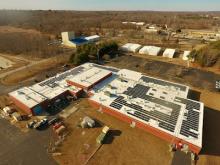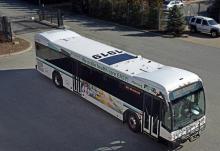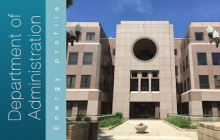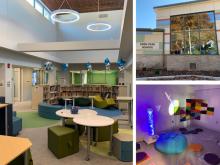Energy Profiles
- Meet the new Chairman of the Public Utilities Commission, Ron Gerwatowski | September 2020

Governor Gina Raimondo appointed Ron Gerwatowski Chairman of the Public Utilities Commission in June 2020. Chairman Gerwatowski has worked in the utility and energy industry for over thirty years. Prior to his appointment, he served as a Senior Regulatory Advisor to the Rhode Island Division of Public Utilities and Carriers.
- RI Army National Guard installs largest rooftop solar array on state facility | September 2020

The Rhode Island Army National Guard (RIARNG) completed the interconnection of its rooftop solar facility on the 56 Troop Command Armory Building at Camp Fogarty in East Greenwich. The $335,000 project is expected to generate $45,700 in annual energy savings.
- From the Desk of the Commissioner July 2020 | July 2020

Racial equity is now on the forefront of our national conversation, compelling all of us to examine implicit biases, as well as our institutions, as we seek to create a more inclusive community. During this turbulent time, we are following Governor Gina Raimondo’s leadership and as she implements “RIse Together”
- From the Desk of the Commissioner | May 2020

Much has changed in our world over the past few months. I want to express my sincerest wishes for your continued health and safety during this difficult time. Today, I would like to offer some perspective on the road ahead and reassure you that our Administration and the Office of Energy Resources remain committed to advancing a cleaner, more affordable, and more reliable energy future.
- RIPTA buses receive solar panels to improve energy efficiency | April 2020

RIPTA buses are now receiving a little boost from sun! Most riders won’t notice it from where they are standing, but RIPTA has installed solar panels on all 33 of its 2019 diesel fleet. While the solar panels are not designed to make the buses go, they help power many of the vehicles’ auxiliary systems, such as ignition, GPS, automated stop announcements and lighting.
- RI’s largest state-owned office building reduces energy consumption by 27% | April 2020

Built in 1989, the William E. Powers Building in Providence, Rhode Island houses over 800 state employees including the Departments of Administration and Revenue. It is the largest state-owned office building in Rhode Island and provides effective oversight, accountability and support of agency operations across state government.
- Transformation at Cranston Public Schools | November 2019

A major transformation is underway at Cranston Public Schools. As one of the largest cities in Rhode Island, Cranston has 26 school buildings – many of them built between 50 and 70 years ago – and they are long overdue for an update.
